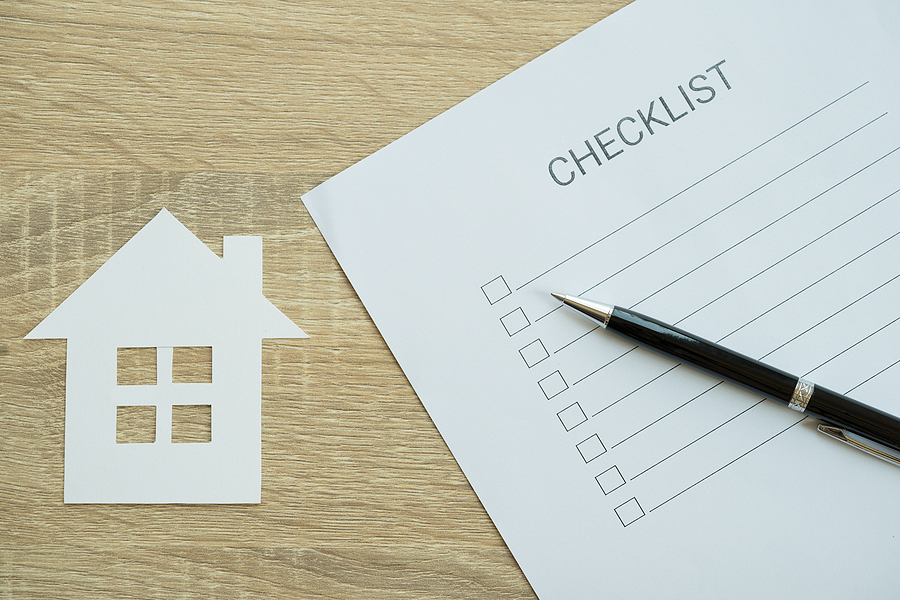A Move-in Checklist for NYC Area Landlords

Your tenant has signed a lease. The moving date is set. Now all you have to do is sit back and collect rent, right?
There’s one more important step that can protect you and your tenant throughout the life of their stay and after they move out: a move-in checklist. Adding this important step can eliminate a lot of issues and disputes later.
What is a move-in checklist and why is it important?
A move-in checklist helps document existing conditions in the unit, making it clear what damage has been caused by the tenant. A checklist can help reduce the likelihood of disputes between the landlord and tenant during the tenancy, as well as when the tenant moves out and it’s time to return all or part of the security deposit.
It can also give you an opportunity to get to know your tenant better, to set expectations, and to agree on any repairs or maintenance items prior to move-in.
How to conduct a move-in inspection
You and your tenant should conduct the inspection together, using a checklist to document the condition of every aspect of the unit. Both of you should sign it. Give a copy to the tenant and attach a copy to the lease agreement. Then, file it away until it comes time for the tenant to move out.
But don’t stop at the checklist. Document everything with photos as well. You don’t have to print the photos (although you certainly can), but make sure you keep the digital files safe and secure. Putting them on a thumb drive labeled with the tenant’s name, unit number, and occupancy dates can be helpful if any questions arise in the future.
Items to include on the move-in checklist
Start with the tenant’s name, the property address, move-in date (add the move-out date when you know it), inspection date(s), and who was present at each inspection.
Then make a list with four columns, divided by rooms:
- The specific feature, such as walls, door, window, window treatment, stove, etc.
- Notes about the condition when the tenant arrived
- Notes about the condition when the tenant departed
- Notes about repair, replacement or maintenance costs ,if necessary
Here are the items to include:
Living/Dining/Bedrooms
- Ceiling Fan(s)
- Ceilings
- Chair Rail/Trims
- Closet(s)
- Doors and Locks
- Electrical Outlets
- Fireplace and Mantel
- Floors
- Lighting
- Other
- Radiators
- Shelves/Built-ins
- Smoke/CO2 Detector
- TV/Internet Outlets
- Walls
- Window Air Conditioner(s)
- Windows and Window Treatments
Kitchens
- Cabinets
- Ceiling Fan(s)
- Ceilings
- Chair Rail/Trims
- Closet(s)
- Countertops
- Dishwasher
- Doors and Locks
- Electrical Outlets
- Exhaust Fan/Range Hood
- Fireplace and Mantel
- Floors/Floor Coverings
- Garbage Disposal
- Lighting
- Other
- Oven and Stovetop
- Pantry
- Radiators
- Refrigerator
- Shelves/Built-ins
- Sink and Faucet
- Smoke/CO2 Detector
- TV/Internet Outlets
- Walls
- Window Air Conditioner(s)
- Windows and Window Treatments
Bathrooms
- Ceilings
- Closets
- Doors and Locks
- Electrical Outlet(s)
- Floors/Floor Coverings
- GFC Outlet(s)
- Lighting
- Other
- Radiators
- Shower and Bathtub
- Shower/Tub Enclosure
- Sink and Faucet
- Tile
- Toilet and Plumbing
- Towel Racks
- Walls
- Windows and Window Treatments
Make sure you also document any stairs, railings, in-unit elevators, or other items as well.
If during the inspection you or the tenant commit to repairing or replacing any items, make sure you note that.
For every item, be as specific as possible. Don’t just say a tub is chipped. Instead, document the size and location of the chips. The more thorough you are before the tenant moves in, the fewer potential issues are likely down the road.
Related article for when a tenant moves out
Apartment Turnover Checklist for NYC Landlords.
If you’d like a free review of your current building insurance policy, please call us at 877-576-5200.

